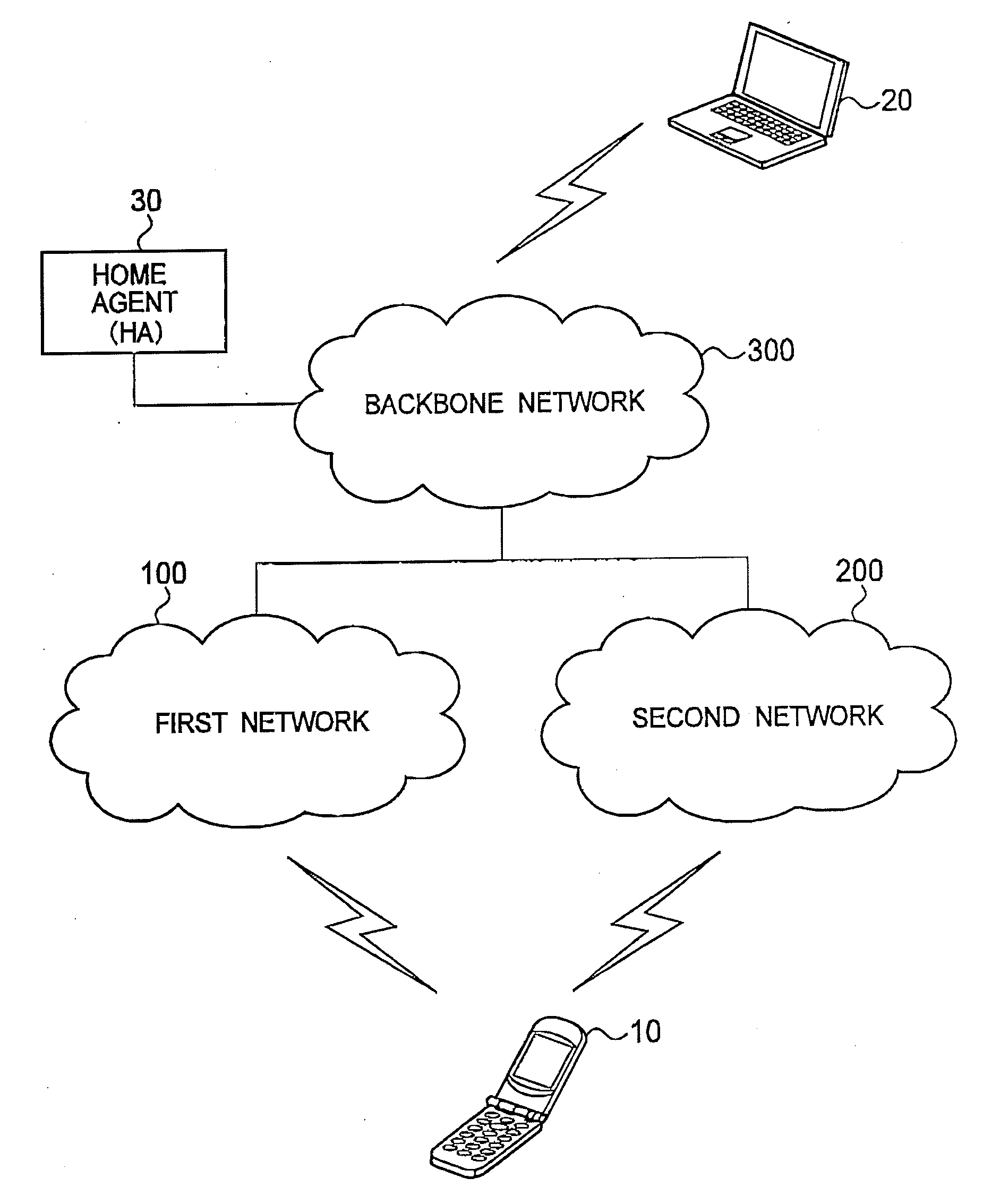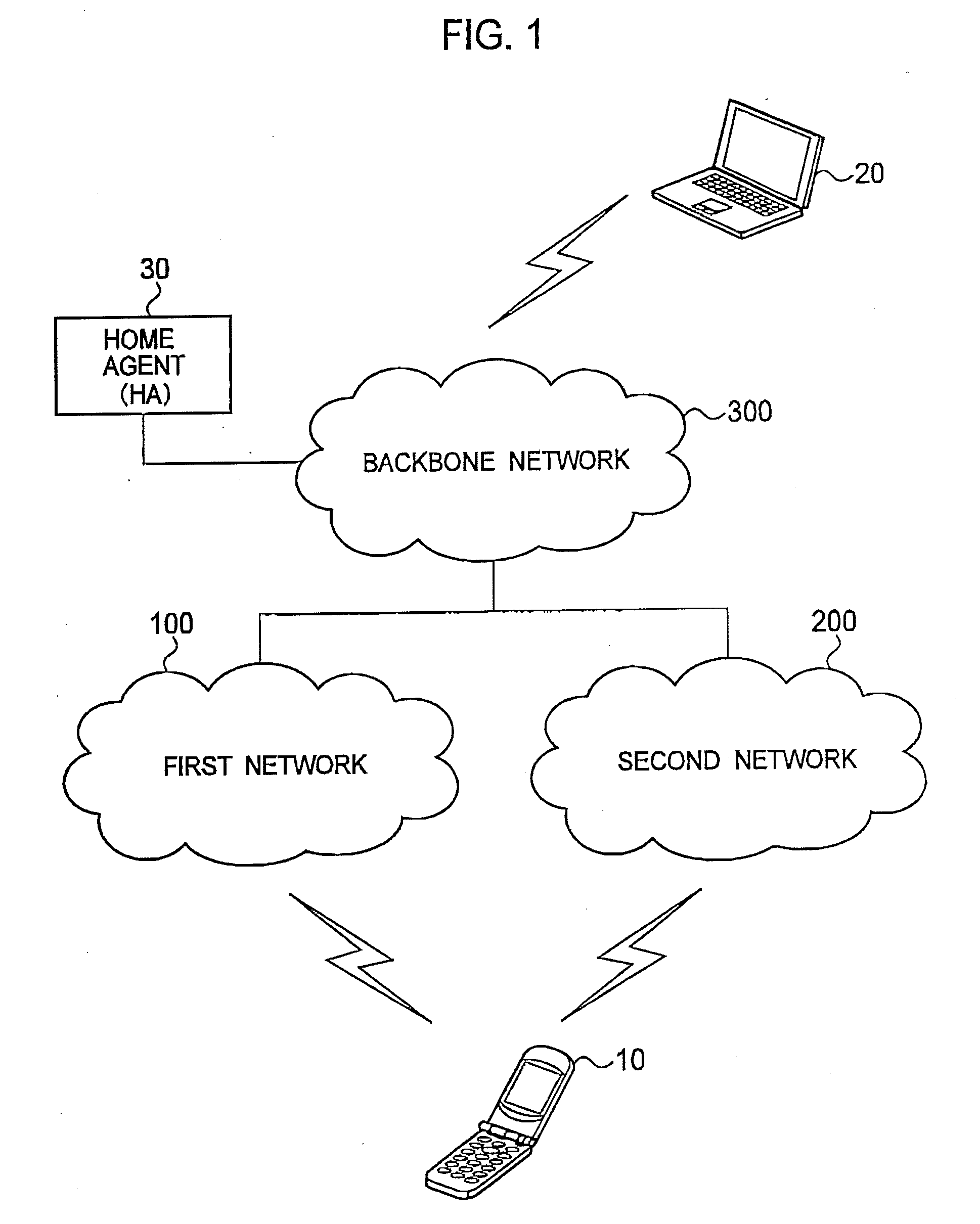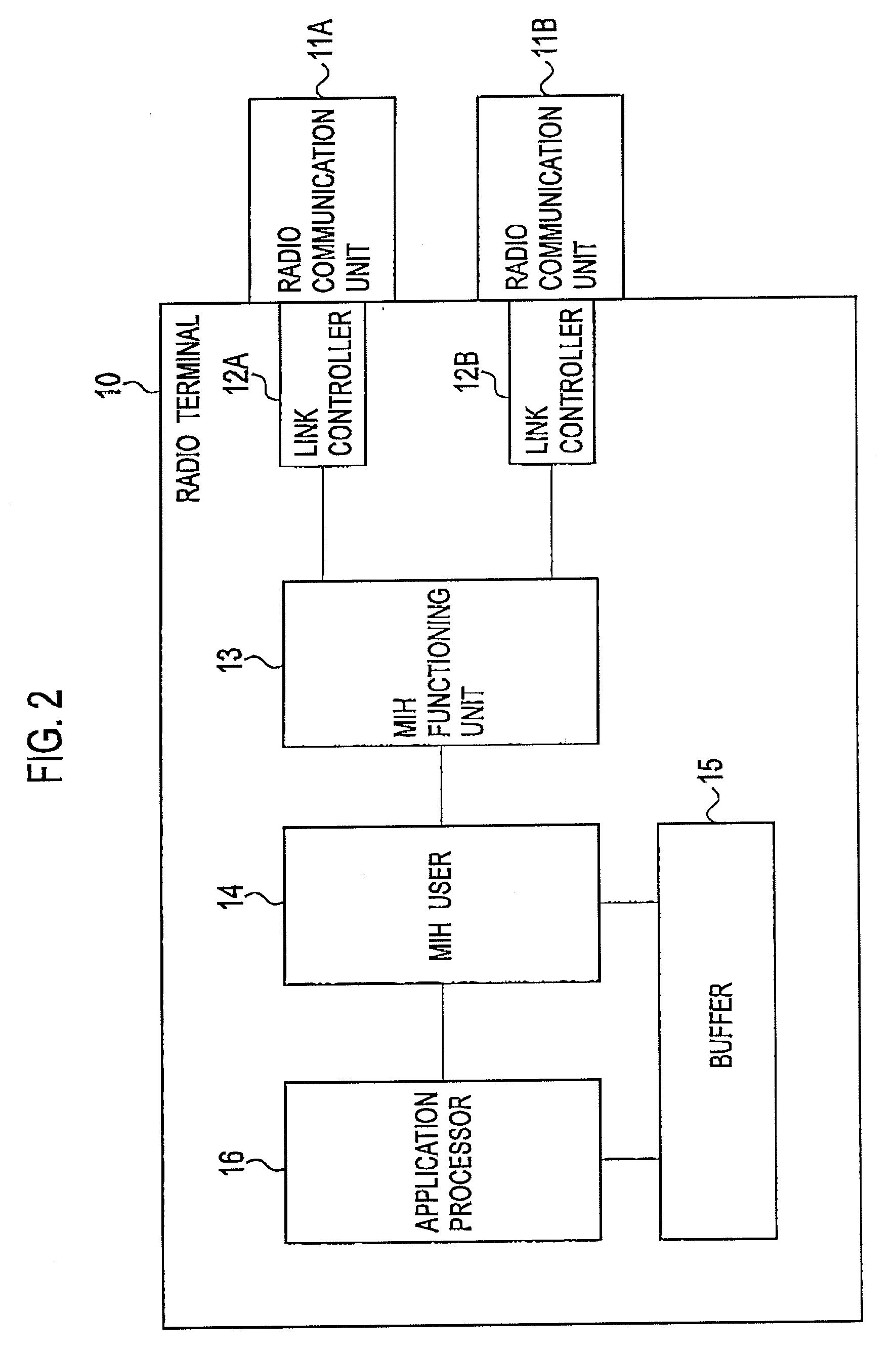Radio terminal and communication terminal
a technology of communication terminal and radio terminal, which is applied in the field of radio terminal and communication terminal, can solve the problems of unnecessarily large loss of difficulty in properly controlling the amount of packets stored in the buffer, so as to prevent sudden change of play and degradation of voice, the effect of improving the real-time constraint of packets
- Summary
- Abstract
- Description
- Claims
- Application Information
AI Technical Summary
Benefits of technology
Problems solved by technology
Method used
Image
Examples
first embodiment
Configuration of Communication System
[0040]The configuration of a communication system according to a first embodiment of the present invention is described below by referring to the drawings. FIG. 1 is a view showing the configuration of a communication system according to the first embodiment.
[0041]As shown in FIG. 1, the communication system includes a radio terminal 10, a communication terminal 20, a home agent 30, a first network 100, a second network 200, and a backbone network 300.
[0042]In the first embodiment, a delay time in the first network 100 is longer than a delay time in the second network 200. The radio terminal 10 executes communications with the communication terminal 20 through the first network 100 or the second network 200.
[0043]It should be noted here that the concept of the delay time in a network includes not only a time period in which a packet from the communication terminal 20 (corresponding node) stays in the network (stay time) but also variations of the...
second embodiment
[0171]A second embodiment of the present invention is described below by referring to the drawings. In the following description, differences between the first embodiment and the second embodiment are mainly described.
[0172]In the first embodiment, the flow of packets from the communication terminal 20 to the radio terminal 10 is mainly described. In contrast, in the second embodiment, the flow of packets from the radio terminal 10 to the communication terminal 20 is mainly described.
[0173]In other words, in the second embodiment, as compared with the first embodiment, the function of an application processor 16 of the radio terminal 10 and the function of an application processor 26 of the communication terminal 20 are replaced with each other. Specifically, the application processor 26 of the communication terminal 20 has a function of the application processor 16 according to the first embodiment. The application processor 16 of the communication terminal 10 has a function of the...
example 1
(Example 1 of Packet Reproducing rate Control)
[0178]Example 1 of controlling a packet reproducing rate according to the second embodiment is described below by referring to the drawings. FIG. 8 is a view showing Example 1 of controlling a packet reproducing rate according to the second embodiment. Here, a case where the radio terminal 10 is based on a SCoA (Single Care of Address) is shown as an example. In the SCoA, the radio terminal 10 transmits packets through any one of the first network 100 and the second network 200.
[0179]At time t1, the communication terminal 20 receives a handover preparation request from the home agent 30. At time t1, the communication terminal 20 changes the packet reproducing rate to a rate higher (faster) than a predetermined rate. In addition, at time t1, the communication terminal 20 stops the AJB control.
[0180]At time t2, the communication terminal 20 receives a handover execution request from the home agent 30. It should be noted that during a time ...
PUM
 Login to View More
Login to View More Abstract
Description
Claims
Application Information
 Login to View More
Login to View More - R&D
- Intellectual Property
- Life Sciences
- Materials
- Tech Scout
- Unparalleled Data Quality
- Higher Quality Content
- 60% Fewer Hallucinations
Browse by: Latest US Patents, China's latest patents, Technical Efficacy Thesaurus, Application Domain, Technology Topic, Popular Technical Reports.
© 2025 PatSnap. All rights reserved.Legal|Privacy policy|Modern Slavery Act Transparency Statement|Sitemap|About US| Contact US: help@patsnap.com



